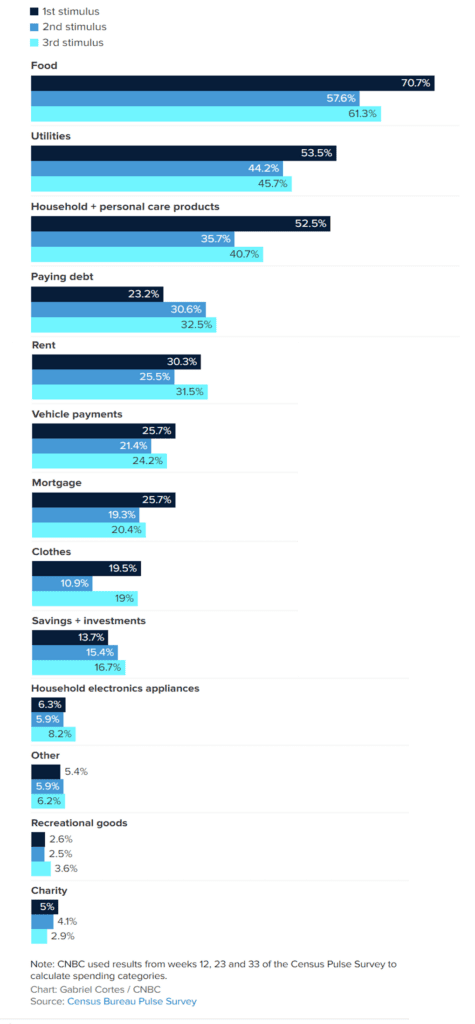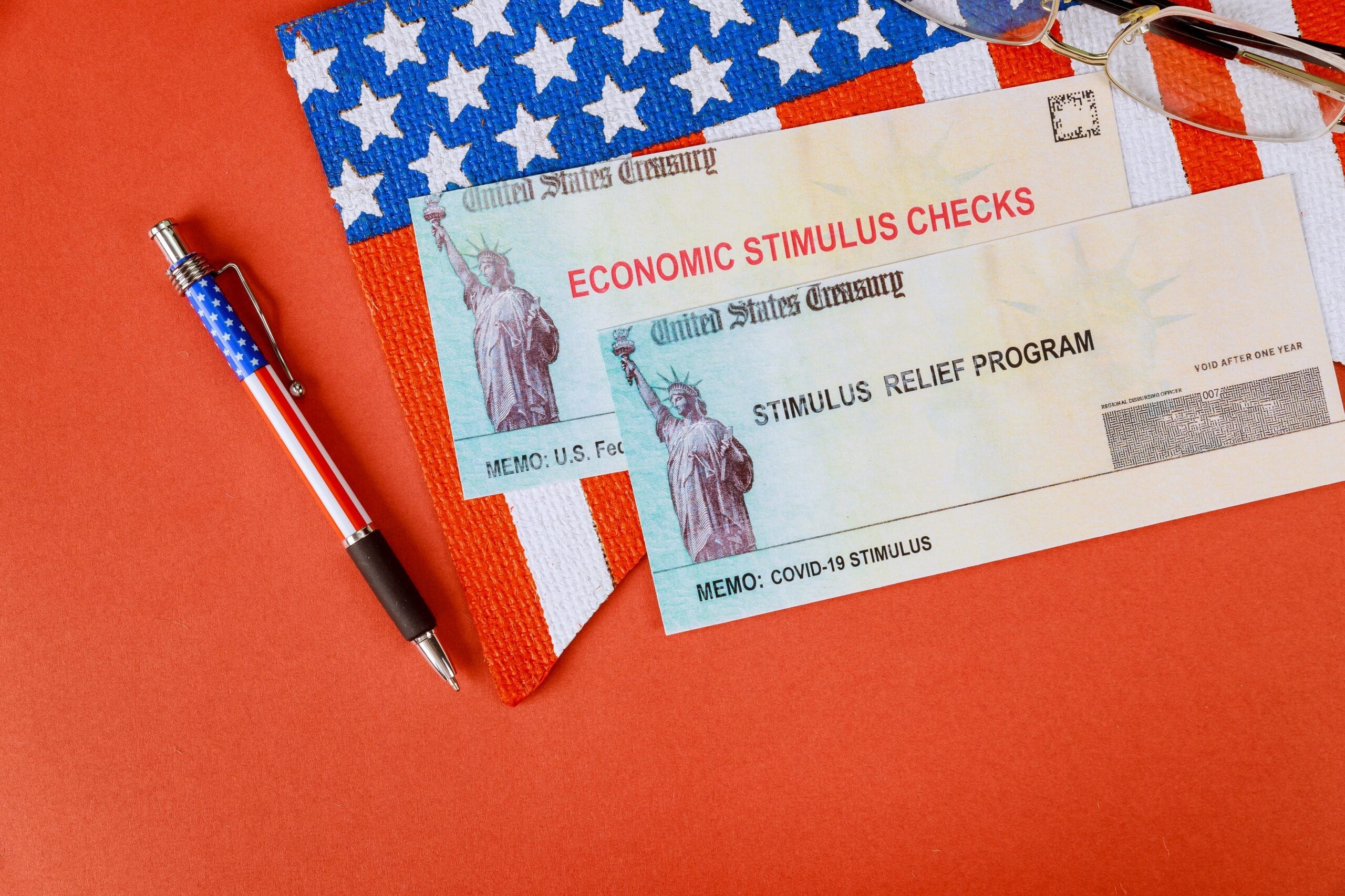By: Greg Iacurci
See original post here.
________________________________________
KEY POINTS:
- Pandemic-era stimulus checks helped many Americans pay bills, reduce debt and build savings. For some, the payments altered how they think about money.
- “The stimulus changed how I think about what’s possible, personal spending habits and the way in which I manage my money,” said Denise Diaz, a recipient who lives outside Orlando, Florida.
_________________________________________
For Denise Diaz, the benefits of pandemic-era stimulus checks went beyond everyday dollars and cents. They rewired how she thinks about money.
Diaz, a mother of three who lives outside Orlando, Florida, received more than $10,000 from three rounds of “economic impact payments.”
They were among the 472 million payments issued by the federal government, totaling about $803 billion. The effort amounted to an unprecedented experiment to prop up households as Covid-19 cratered the U.S. economy.
The checks (and other federal funds) are at the epicenter of a debate as to whether and to what extent the financial assistance helped fuel inflation, which is running at its hottest in about 40 years.
How Americans spent their three rounds of pandemic stimulus

But they undoubtedly offered a lifeline to millions of people during the worst unemployment spell since the Great Depression. Recipients reached by CNBC used the money in various ways — to cover household staples, make debt payments and create rainy-day funds, for example.
Diaz, who co-directs a local nonprofit, Central Florida Jobs With Justice, used the funds to pay off a credit card and a car loan. Her credit score improved. She built an emergency fund — previously nonexistent — which the household was able to lean on when Diaz’s partner lost his job earlier this year.
Consequently, Diaz, 41, feels more financially stable than during any other period of her adulthood.
The financial buffer and associated peace of mind also changed her psychology. She automated bill payments (for utilities, a second family car and credit cards, for example) for the first time.
Average amount of the three Covid-19 stimulus checks, by income bracket


“We weren’t doing that [before],” Diaz said. “Because you never knew what could happen [financially], so I never trusted it.”
These days, Diaz thinks more about budgeting. Homeownership seems within reach after years of renting.
“The stimulus changed how I think about what’s possible, personal spending habits and the way in which I manage my money,” she said.
‘Tough to make a dent’
The stimulus checks were the result of legislation — the CARES Act, Consolidated Appropriations Act and American Rescue Plan Act — Congress passed in 2020 and 2021 to manage the fallout from Covid-19.
Households received payments of up to $1,200, $600 and $1,400 a person, respectively. Qualifications such as income limits and payment amounts for dependents changed over those three funding tranches.
Census Bureau survey data shows most households used the funds for food and household products, and to make utility, rent, vehicle, mortgage and other debt payments. To a lesser extent, households used them for clothing, savings and investments and recreational goods.
Salaam Bhatti and Hina Latif, a married couple living in Richmond, Virginia, used a chunk of their funds to reduce credit card debt, which has proven difficult in recent years, especially after having kids. (They have a 3-year-old and a 3-month-old.)
Bhatti and Latif paid off several thousand dollars of the debt during the pandemic and have about $30,000 left, they said.
“It’s been tough to make a dent,” Bhatti, 36, said. “Sometimes it just feels like you’re not making any progress.”
The couple had a gross income of about $75,000 during the pandemic. Bhatti was the public benefits attorney at the Virginia Poverty Law Center (he’s now the deputy director), and Latif teaches online at the College of DuPage in Illinois.
Prior to getting the stimulus payments, the duo used a “debt shuffle” approach to stay afloat, Bhatti said. That included taking advantage of multiple balance-transfer offers that carried periods of zero interest, he said.
They also used stimulus funds to help cover higher household costs for groceries and other items like diapers.
The stimulus changed how I think about what’s possible, personal spending habits and the way in which I manage my money.
Denise Diaz, STIMULUS CHECK RECIPIENT IN FLORIDA
Bhatti and Latif, like Diaz, also received monthly payments of the enhanced child tax credit — up to $250 or $300 per child, depending on age — that lasted for six months starting in July 2021.
“Costs increased with our new baby so it often feels like we’re scooping water out of a boat with a hole in it,” Bhatti said. “We are not living extravagantly by any means, but because the bulk of our income [is] going to the debt, we are pretty much living paycheck to paycheck.”
‘Every dollar really matters’
Nestor Moto Jr., 27, largely used his stimulus payments to chip away at student loans. The Long Beach, California, resident received about $4,000 from federal and state-issued payments.
He used about half for loans and 10% for savings. The remainder helped Moto, an office manager for an accounting firm, pay bills (phone and car insurance, for example) when his employer reduced his full-time schedule to about 10 hours a week earlier in the pandemic.
“They really helped me catch up on my student loans,” said Moto, who graduated from California State University Long Beach with a bachelor’s degree in political science. He still owes about $10,000 of an $18,000 initial balance.
Moto wanted to reduce his debt even though the federal government paused payments and interest for the last two-plus years. He’s not expecting the Biden administration to wipe out his outstanding debt.
“I saved money,” Moto added. ”[The stimulus] really helped put into perspective how much money I make a month and week and how much I spend.
“It showed me how much every dollar really matters.”
While grateful for the financial assistance, Bhatti feels a slight letdown after getting a brush with financial freedom. The U.S. economy has rebounded significantly since early 2021, when lawmakers passed the last broad pandemic aid package for individuals; another doesn’t appear likely despite ongoing financial pressures for some households.
“It feels like such a tease,” Bhatti said of the stimulus payments. “It felt like dangling a carrot in front of you, the government saying, ‘We know we can help you.’ And then eventually choosing not to.”





















